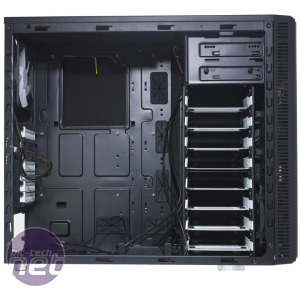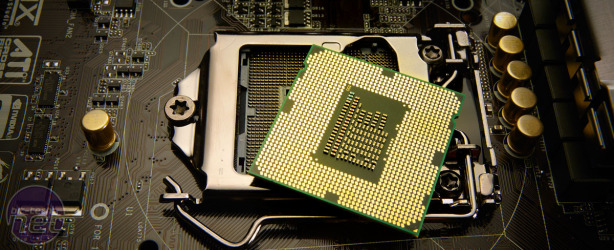
How We Tested
For testing we used a Fractal Design Define R3 case, which we picked for a number of reasons. For a start it’s well made and easy to use, which means we weren’t likely to want to hurl it through a window during the long time we were going to be spending with the case. It’s also got a very traditional cooling setup inside with two 120mm mounts at the front of the case, two in the roof and one each in the side panel, rear panel and floor of the case.This traditional setup means that the results garnered from this case are going to be applicable to many other cases out there as, while they may not share the same external or cosmetic design, they will share the same cooling setup.


The R3 also has blanking plates for those fan mounts not in use and these were useful for simulating what effect having, say, a case without a side panel fan mount would have on temperatures. Other important things to note are the fact that the R3 has a dedicated PSU intake grille, meaning its heat is isolated from the rest of the case, and that it comes equipped with dust filters on its front fan mounts. It also comes with a door, but to make the results as widely applicable as possible we left this open during testing as the majority of cases don’t come with a door.
The fans we used were all Fractal Design Silent Series 120mm models. These are solid fans that offer a good compromise between high air flow and noise. Obviously take this into account when looking at the figures on the next few pages - if you use fans with a little more punch then you can expect to see lower temperatures and vice versa.
Generating heat inside the case was an Intel Core i5-2500K CPU overclocked to 4.5GHz (with a Vcore of 1.3V) and a Gainward GeForce GTX 560 Ti Golden Sample. These are popular components that we felt well represented the kind of PC that many of our readers are likely to own. Again though, if you own significantly more or less powerful hardware then take that into account when viewing the figures on the next few pages - first person to shout ‘meh, I run two GTX 580’s in SLI so this is irrelevant to me’ in the comments thread gets a slap. It's also worth noting that the graphics card we're using here isn't a rear exhausting model, which adds an extra cooling burden on the case and fans.

Cooling the CPU was an Enermax ETS-T40-TB cooler that we’ve not actually looked at here on bit-tech yet. Our friends over at Custom PC have looked at it however and found it to be an average CPU cooler. This is ideal for this testing as it’s likely to show a larger range of temperatures than a more proficient air cooler, such as the Be Quiet! Dark Rock Pro would, as it'll only perform well when supplied with plenty of cool air. We also fitted the cooler with a low airflow Silent Eagle fan, again to allow our testing to highlight those setups that better provided the cooler with cool air.
Both the CPU and graphics card fans were set to a constant speed - the CPU fan through the BIOS and the graphics card through MSI's afterburner software. This was to stop the automatic fan speed control interfering with the results of the testing.
To load the system we looped the Unigene Heaven DirectX 11 benchmark and loaded all four of the CPU cores with Prime95. We then waited for the temperatures to even out before making a note of them. We couldn’t find a reliable way to measure the temperature of the southbridge in software so we resorted to measuring the temperature of the heatsink directly using a thermal probe.

MSI MPG Velox 100R Chassis Review
October 14 2021 | 15:04








Want to comment? Please log in.